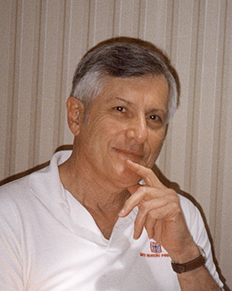
Fall 2005
NYU Strike Can't Stop NYSTESOL
New Profile: James Asher
New Profile: Mary Giles
In Memory of Nadia Shahin
TESOL Statement on Visas
![]()
/ Index /
/ Letters /
/ Profiles /
/ Search /
![]()
Subscribe
for free!

James Asher, Inventor of Total Physical Response
New ESL MiniConference Profile Series
1. What is your main ESL activity now?
As the principal investigator in a wide range of research projects that explored the Total Physical Response (known worldwide as TPR), I found that research is not enough for getting a good idea into actual practice. One must follow through with materials that practitioners can use in the classroom such as teacher guidebooks, student books, student kits, games and video demonstrations. It helps, too, to make oneself available to conduct "live" demonstrations and hold question- and -answer sessions.
2. How did you start your ESL related career?
I am a research psychologist who wanted to know what psychology can contribute to second language learning. There is a popular belief that most of the work in psychology is about abnormal behavior when the fact is that most psychological research is about "learning." There is a hundred years of work exploring the parameters of animal and human learning. With that much information, what can psychologists offer to reduce stress and enhance the performance of children and adults trying to acquire another language?
The answer is that all that work has very little to offer that will help instructors cope with the most "difficult" skill to acquire in school---learning another language. Of all the people who start the study of a second language in school, less than five percent will persist to a level of fluency. I wanted to turn that around and I believe that is what happened with TPR --- perhaps the most powerful tool in an instructor's box of tools.
3. What are some of the language/culture backgrounds with which you are most familiar?
As a guest speaker I have had the opportunity to work with educators around the world. I find that they all have in common a dedication to a continual search for ways to improve their work in the classroom.
4. If you had to give three pieces of advice to a new teacher working with English language learners, what would these be?
Excellent question!
First, be aware of the "transparency" illusion. Any native speaker has a serious handicap as a teacher. The native has such an exquisite mastery of the target language, it seems transparent like "looking through glass." It is obvious, so why isn't it obvious to the learner? If I say something, just listen and you will understand. The native speaker is like superman with x-ray vision. So, why doesn't the student see what I see as the teacher? Perhaps if they just try a little harder.
Second, be aware of the "novelty" illusion. You will continually hear about the latest "hot" technique that promises to solve all your problems in the classroom. The reality is that there is no panacea. There is no all-purpose tool. I might add, there are no "methods." A method implies a formula which implies science. Teaching is an art, not a science. Think of yourself as an artist with a box of tools. Your task is to decide which tool to use at any given moment in training.
Third, be aware of the "efficiency" illusion. The shortest distance between two points is a straight line. So, if we want students to speak in the target language, let's start with speaking exercises such as "Listen and repeat after me!"
The reality is that there should be a "silent period" of several weeks that prepares students for speaking. In infant development, you can observe the "silent period" in which caretakers utter directions and the infant is silent but responds with a physical action such as, "Smile for Mommy!" "Give me your hand!" or "Pick up your toy and put it on your bed." During the "silent period," there is a steady flow of language-body conversations. This will continue for about a year until the child has internalized a large linguistic map of how the target language works and is ready to speak spontaneously. Of course, speech will not be perfect, but gradually it will shape itself in the direction of the native speaker.
The evidence to me is quite clear that we are hard-wired to acquire our first or second or third languages with comprehension first followed later with speaking. For more articles on this important issue, please go to www.tpr-world and then click on "about TPR and TPRS."
5. What do you see as the most important issues facing the ESL/EFL language teaching profession today?
Another excellent question!
In the 1960s, when Roger Sperry won a Nobel Prize for his experiments with cats showing that each hemisphere of the animal's brain can think independently, researchers worldwide were inspired to follow-up with 4,000 experiments. We know more about brain organization in the past 50 years than we knew in the prior 5,000 years. Almost none of this information has filtered into educational practice.
To move from a search for the latest "hot" technique to the next plateau, I recommend that instructors gobble up all the information they can about brain organization, specifically what we now know about the right and left brain. Then look in one's box of tools and identify which tool plays to the right brain and which plays to the left brain. All of my books offer easy to read explanations of how each hemisphere of the brain works.
Interview by Robb Scott
2005 ESL MiniConference Online

Robb@ESLminiconf.net